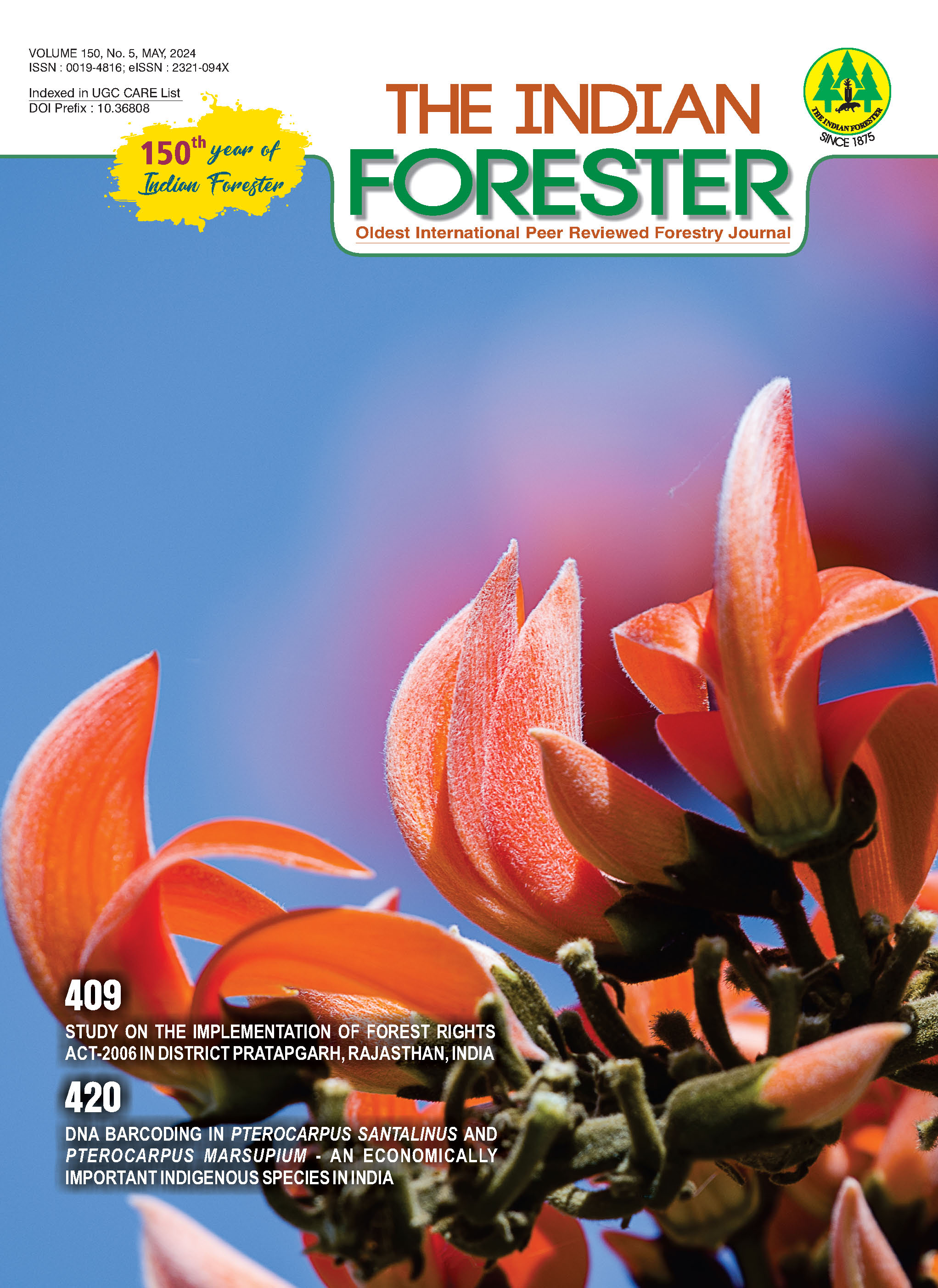Simple Additive Weighting Method (SAW) of Decision Making Leads to the Genetic Evaluation of the Matured Parental and Progeny Trials in Eucalypts
DOI:
https://doi.org/10.36808/if/2024/v150i5/169471Keywords:
Eucalyptus spp., Hybrids, Simple additive weighting method (SAW), Morphometric trait, GenotypesAbstract
The pulpwood shortage in India during the last two decades or so led to the development of fast-growing species particularly eucalypts. In this context, ICFRE-Forest Research Institute (Dehradun) is known for its continuous efforts in the development and improvement in the hybrids and interspecific variety of Eucalyptus spp. through arboretum production and inter specific hybridization programmes, which have a high demand in the industry. Unfortunately, the lagging database and the lacuna of identification of the Eucalyptus spp. was missing, where the genotypes need to be genetically evaluated across the locations for which statistical technique, i.e. , Simple Additive Weighting Method (SAW) came into rescue. The SAW assists in decision making for selection of random genotypes from a huge lot on the basis of weight given to a particular trait. Results revealed that the 20 best performing genotypes were selected from each trial on the basis of the morphometric traits and outstanding genotypes were recommended for the development of breeding arboretum and seedling orchards. The investigation reveals that the highest survivability rate was observed for Manakpur (Yammuna Nagar) and Kharkan, Hoshiarpur (Punjab) in case of parental and progeny trials, respectively. The genetic variation of the parental and progeny trial was found to be highest in Dehradun (Uttarakhand). In case of morphometric trait analysis, high heritability (H2=0.93par; H2=0.72pro) coupled with genetic advance (100.45%par and 48.52%pro) was observed for clear bole height (CBH) and Tree Height (TH) in pro case of parental and progeny trials, respectively. Notably, the Principal Component Values (PCA) explained 73.60% and 79.07% of the variation by a single component for five different quantitative traits in parental and progeny trials, respectively. Overall, the best performing genotypes from both kinds of trials have been determined after SAW and genetic estimates, which could possibly be retained for successful breeding programmes in eucalypts.Downloads
Download data is not yet available.
Downloads
Additional Files
Published
2024-05-01
How to Cite
Bhandari, M. S., Maikhuri, S., Bisht, A., & Chandra, G. (2024). Simple Additive Weighting Method (SAW) of Decision Making Leads to the Genetic Evaluation of the Matured Parental and Progeny Trials in Eucalypts. Indian Forester, 150(5), 436â€448. https://doi.org/10.36808/if/2024/v150i5/169471
Issue
Section
Articles
License
Unless otherwise stated, copyright or similar rights in all materials presented on the site, including graphical images, are owned by Indian Forester.





